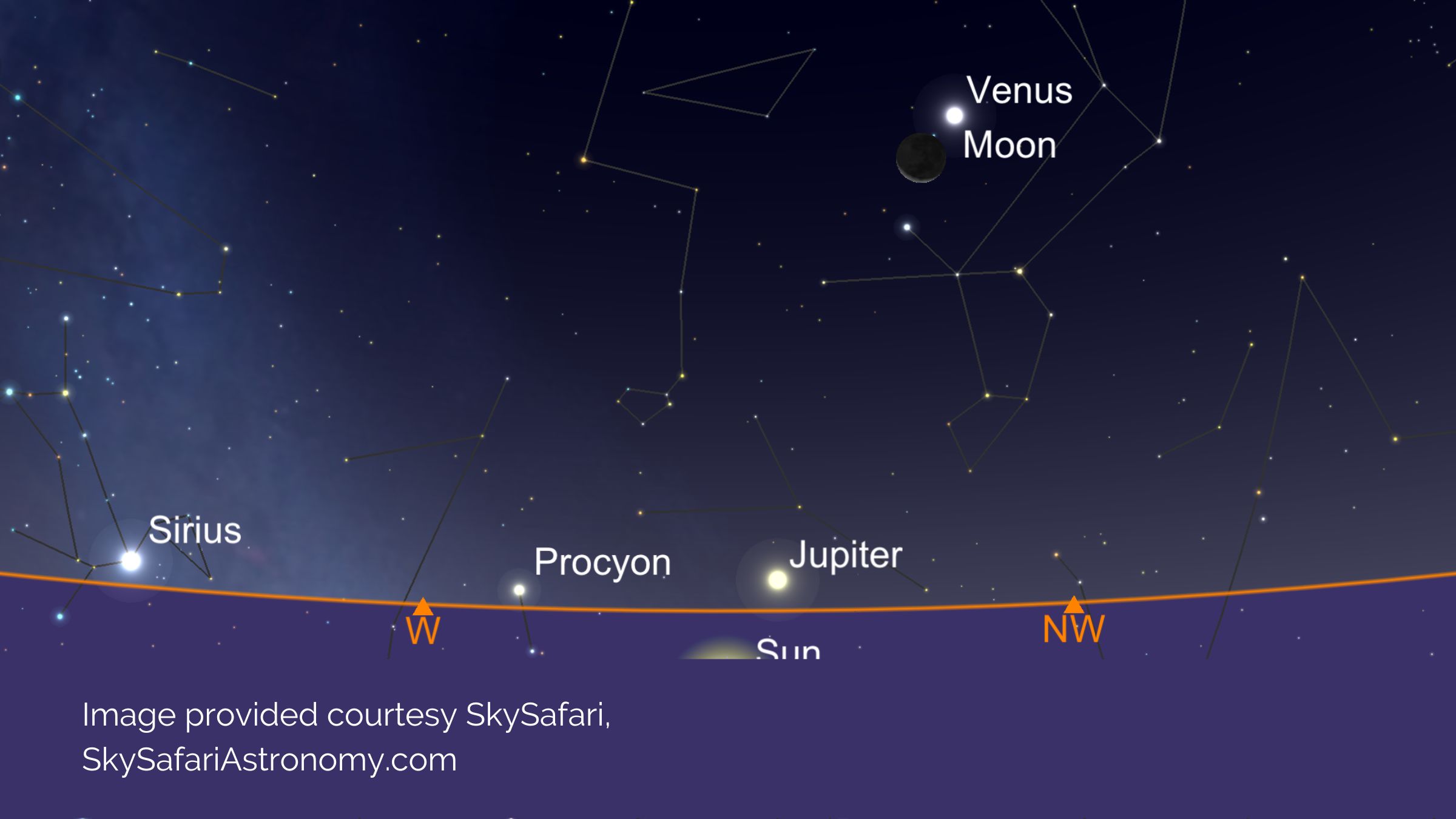The Moon and Venus make a stunning duo. If the weather is favourable, pack a picnic with family or friends and take some time to watch the sunset before seeing the thin crescent Moon and Venus make an appearance. If you have a view very low on the western horizon, you might spot Jupiter. However, this will be difficult as the Sun will have only just set and the sky probably won’t be dark enough to see the king of our planets.
Use the above image as a guide. Astronomical images provided by SkySafari, a Simulation Curriculum Company, All rights reserved www.simulationcurriculum.com.
When and where to look:
From 6pm, 17th July. Look low towards the western horizon.
Something interesting
We’ve all seen spectacular sunsets, but have you ever looked at what’s happening behind you in the east? As soon as the sun sets, a phenomenon known as the ‘Belt of Venus’ occurs on the opposite side of the sky. First, you’ll notice a pinkish band of colour above the horizon. This is the light from the sunset being reflected off Earth’s atmosphere.
As the minutes tick by, the pink band rises a little higher into the sky and a darker blue band appears below. This is Earth’s shadow! The line between is quite distinct.
Give it a few more minutes, and you can start to see the curvature of our home planet. If you turn to look at this shadow to the south or north, you’ll notice that it’s not as thick as at due east. This is because you’re standing on a round object in space (called Earth!) and the shadow will be greatest from this highest point where you stand.
On the top side of the band, the beautiful pinkish hues melt into the blue sky above. A great and wonderous sight!

